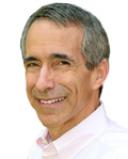

Driving Without Seeing
Chance can kill you. So can sleepiness.
People on the Metro-North commuter train into Manhattan were expecting a normal trip one December morning.
At 7:20 AM, the train turned into a 30-mile-an-hour flying by at 82 miles per hour. It was heading toward Spuyten Duyvil Station; the Dutch name means “spouting devil.”
The train derailed. Four died and 70 were injured. The driver of the train, William Rockefeller, 45, remembered little. When he found out how many were killed and harmed, he reportedly went into shock.
At the time, I told New York reporters that like most accidents, several factors probably contributed to the crash. A few of them are now known.
Rockefeller had severe sleep apnea, according to the National Transportation Safety Board. He had just changed work shifts.
The driver did not remember much: “I was in a daze. I don’t know what I was thinking and the next thing I know I was hitting the brakes.”
Lots of people with sleep apnea crash. Often they don’t remember hitting the brakes. Some don't get the chance to wake up.
How Prevalent Is Sleep Apnea?
More than many Americans know. National measures argue it’s perhaps 10 to 15 percent of the adult population.
But the numbers go way up with age. They also vary by profession.
Close to 30 percent of truckers are thought to have moderate to severe sleep apnea. If a Harvard study of police is to be believed, perhaps close to half of police may have moderate sleep apnea—or worse.
Plus there are lots of other things that make working people sleepy—like shift work; inadequate time for sleep; snoring partners and waking children; texts and emails throughout the night.
Which leads to all kinds of accidents.
Why Is Sleepiness Such A National Problem?
Often because people don’t know they’re sleepy—or even when they’re asleep.
A study done in Detroit—a major center for sleep studies—had people enter into stage 1 sleep for 10 minutes.
Fully half thought they were awake throughout the 10 minutes. Even when shown the videotapes of themselves asleep, some claimed they remained awake—the whole time.
Spouses everywhere know this story. They have observed their partners through the night, asleep and snoring. Those partners are equally certain they were awake.
Plus, people go into microsleeps all the time. They’re out for three, four, five, or 10 seconds.
You can go really far in a car, train or truck in three or four seconds.
Studies in Sweden by Torbjorn Akerstedt showed train drivers routinely falling asleep—standing up and with their eyes open.
The converse is also true. People can wake frequently, night or day, and not remember their awakenings.
This really does happen all the time. My worst example—a woman who thanked the sleep lab personnel for the “best sleep I had in four years.” She did not remember waking up once the entire night.
And yet, by standard sleep study criteria, she woke up 1200 times. And yes, to others' eyes, she really was sleepy.
Truckers, Transport, and Sleep Apnea
The trucking industry has had a long simmering dispute about sleep apnea.
In many states truckers are supposed to inform employers that they might have sleep apnea and then get tested for it. If they don’t show effective, continuing treatment, they can be banned from driving.
So in many places truckers don’t get the test. Who wants to destroy your livelihood?
Truckers are very aware of sleepiness and accidents, however. But like many transport personnel—and safety workers like police—they work odd shifts and long hours. And they are often sedentary–all conditions that really help them gain weight.
High weight often tips people into developing sleep apnea, or worsens its severity.
What Is To Be Done?
Having the population walk more and teaching people how to actively rest would help immeasurably.
Okay, we'll forget utopians ideals for a moment. Things have gotten bad enough that the federal government is starting to act.
President Obama had signed into law H.R. 1035. It doesn’t create new regulations. Instead, it sets up new rules for rulemaking—about how to get truckers screened and then treated for sleep apnea.
Companies don’t want to spend lots of money getting sleep studies. Truckers don’t want to be tested and find their jobs in potential jeopardy.
However, once such rules are hammered out between companies, workers, and regulators, they may prove useful for all transport and safety workers—from police to pilots.
Bottom Line
Sleep is not a “light switch.” Humans are surprisingly bad at figuring out when they are awake—and when asleep. Consciousness operates on a continuum that shifts throughout the 24 hour day.
But sleep apnea causes multiple medical problems that go way beyond increased accident rates. Sadly, people are often poor judges of their own sleep—and relative sleepiness.
So in the end we have to look out for each other. You don’t want your kid texting and driving—an open invitation to disaster. Similarly, you need to tell a friend, relative or co-worker that she or he is snoring so loudly you don’t want to sleep in the same room—or even in the same hotel.
You have to tell others when they’re getting sleepy—particularly when they’re not aware enough to know by themselves. And when people appear snory and sleepy, pay special attention to alcohol.
Alcohol does not just make people sleepy. It makes sleep apnea worse.
Drinking and driving is one link to many preventable deaths. Driving and sleeping is another.



